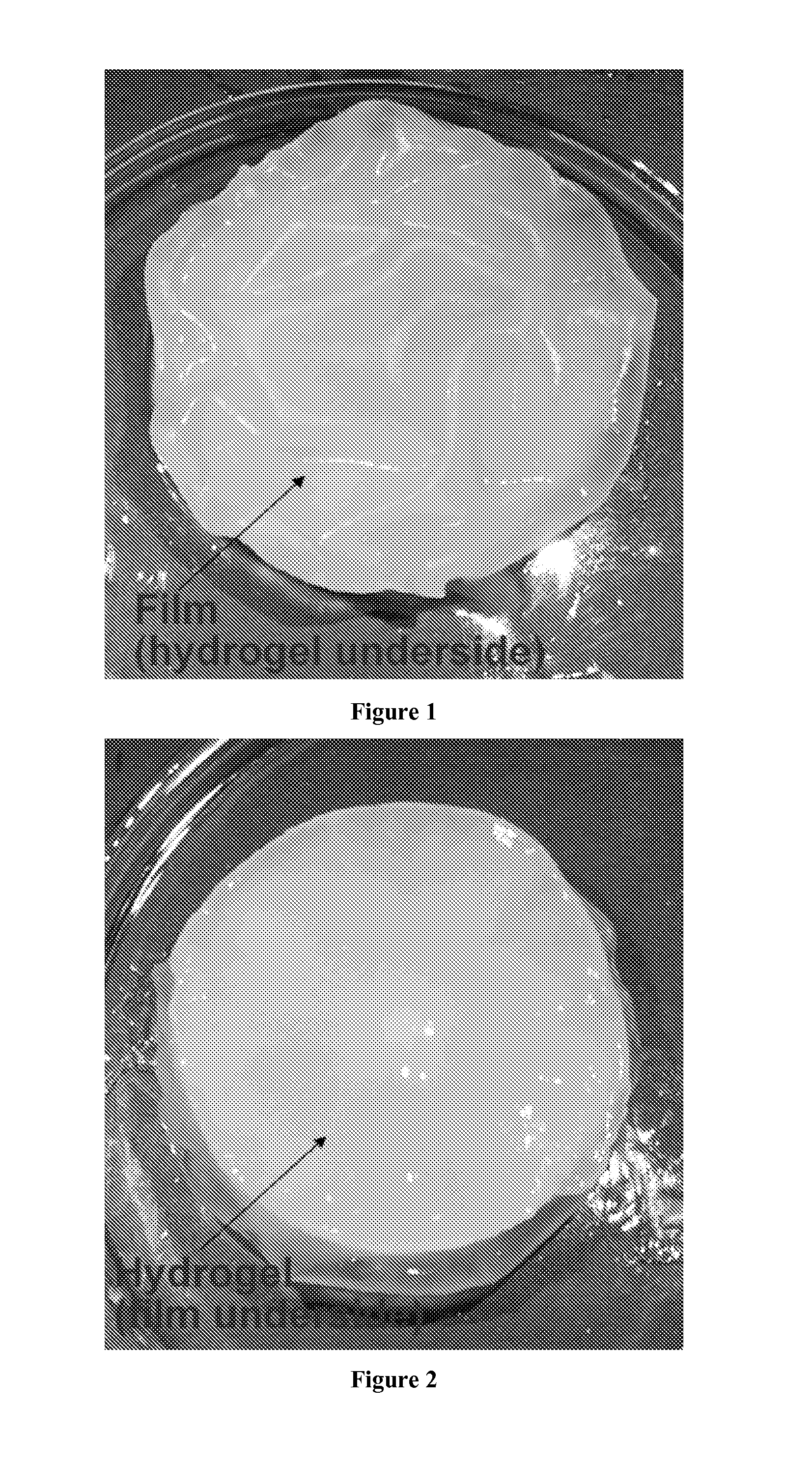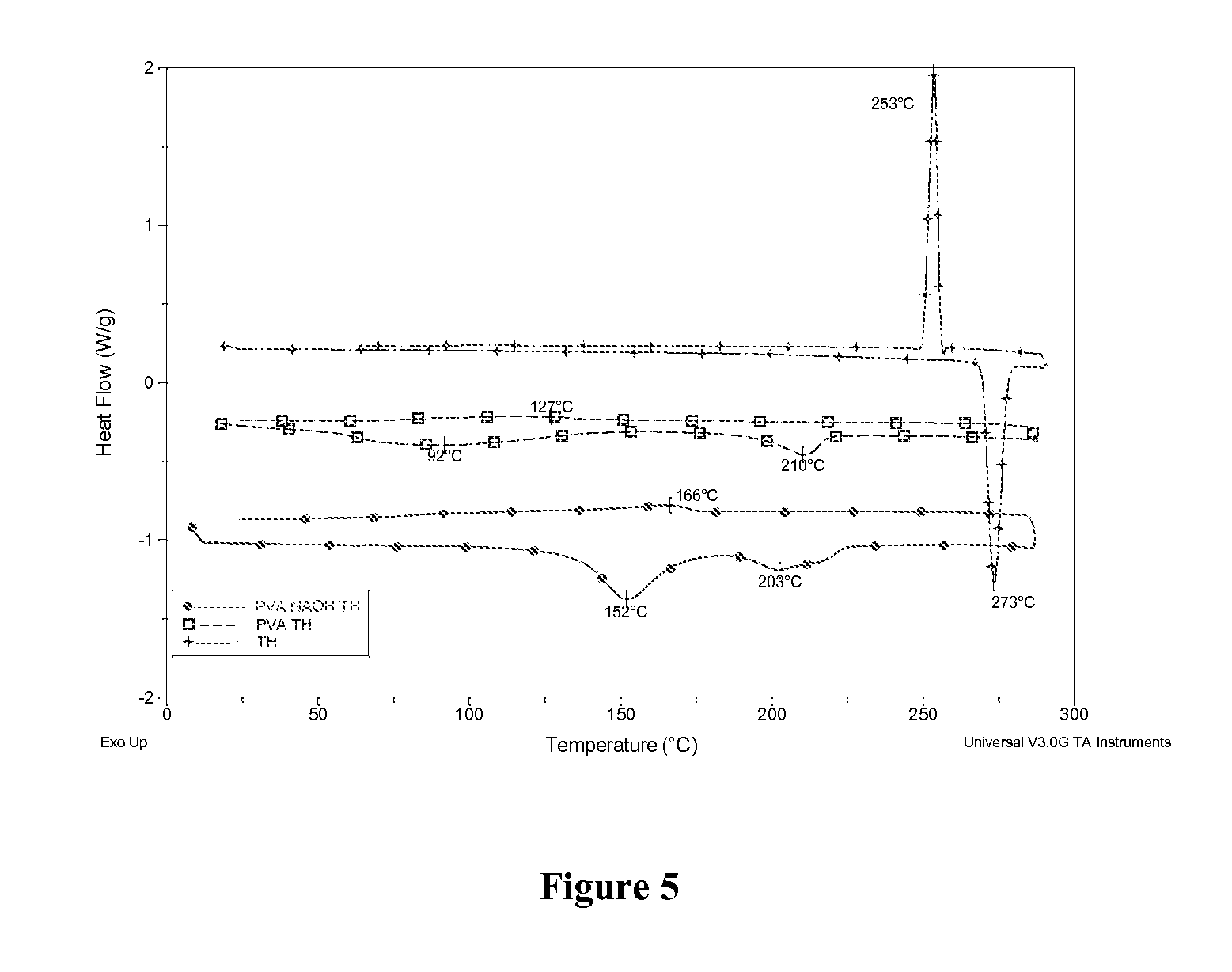Composite gel-based materials
a gel-based material and gel-based technology, applied in the field of gels, can solve the problems of material insoluble in water, poor physical characteristics, and low mechanical strength of swelling, and achieve the effect of greater mechanical strength
- Summary
- Abstract
- Description
- Claims
- Application Information
AI Technical Summary
Benefits of technology
Problems solved by technology
Method used
Image
Examples
Embodiment Construction
[0074]Furthermore, a detailed characterisation of the thermal, micro-structure and hydration properties of the composite, as well as a drug release study was undertaken. The resultant samples were characterised using optical microscopy, modulated differential scanning calorimetry (MDSC) and dissolution testing. The microstructure of the gels was examined using micro-thermal analysis (μTA).
Materials and Methods
Preparation of Samples
[0075]The preparation of the composite consists of casting an aqueous solution onto a layer, which is then subsequently frozen.
Preparation of Gel Component
[0076]Poly (vinyl alcohol) used in this study was supplied by Aldrich and had a weight average molecular weight of 146,000-186,000 and a saponification value of 98-99%. TH was supplied by Aldrich with a molecular weight of 180.2 and a melting point of between 270° C. and 274° C.
[0077]Solutions were prepared by mixing polymer powder (1 g) with distilled water (40 mls) and 0.025M NaOH and 0.3 g of TH. Diss...
PUM
| Property | Measurement | Unit |
|---|---|---|
| thickness | aaaaa | aaaaa |
| thickness | aaaaa | aaaaa |
| thickness | aaaaa | aaaaa |
Abstract
Description
Claims
Application Information
 Login to View More
Login to View More - R&D
- Intellectual Property
- Life Sciences
- Materials
- Tech Scout
- Unparalleled Data Quality
- Higher Quality Content
- 60% Fewer Hallucinations
Browse by: Latest US Patents, China's latest patents, Technical Efficacy Thesaurus, Application Domain, Technology Topic, Popular Technical Reports.
© 2025 PatSnap. All rights reserved.Legal|Privacy policy|Modern Slavery Act Transparency Statement|Sitemap|About US| Contact US: help@patsnap.com



